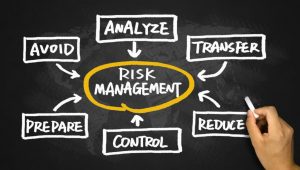Some of the best advice that you can be given is to do with your risk management, risk management is often seen as the key to successful trading, it can make or break a trading strategy. One of the most well-known risk management plans is known as the 1% rule. It is quite simple in principle, you will simply risk just 1% of your account with each trade. So if you have a balance of $100, that 1% will be %1, if you have a balance of $1,000 then that 1% will be equal to $10. It could not be any simpler than that, of course, this 1% will be a different value for all traders as most will of course have different account balances, so it needs to be based on your own account and not simply copying someone else. We are going to be looking more into the 1% rule and giving a few ideas as to why so many traders follow it and even live by it.
So why is it the 1% rule? It is simple really, it is because your plan is to be able to trade today, tomorrow, the day after, and so on. Successful trading is all about being able to survive long enough to become profitable, if you are making large trades and taking large risks, then there is a good chance that this might not happen. The 1% rule simply reduces the amount of risk that you are using when you trade, which is paramount should you wish to be able to last as a trader and to survive a number of losses in a row.
The centre of any good trading strategy should be its risk management, I know we have said that multiple times already and we will continue to say it as it is paramount for your trading survival. You need to remember that the aim of forex is not to make a fortune overnight (although many come into it wanting this), the goal is to make a profit over an extended period of time. Trading is not a gamble and should not be treated like it, control your risks. When you make a number of different small trades, it has reduced the risks and the odds of you being successful will have gone up, simply because there are more opportunities to make a profit. Along with that, your account will last longer, and an account that lasts longer is able to make money for longer, it also gives you more opportunities to learn new things. Not to mention that if you lose a trade and it only losses 1% of the account, it will be far easier to make that 1% back than it will to make back the 30% another trader lost.
The 1% rule is a lot more relevant to those that are trading the shorter-term trading styles, things like day trading and scalping due to the fact that they place far more trades. You need to also bear in mind that each trade will have a slightly different amount of risks, yes it remains at 1% but you need to adjust for the previous results. A win would mean that you are trading a little extra, while a loss will mean that you are trading a little less. You should also consider broker fees, many brokers especially on accounts with low spreads will add a little commission on to each trade, if you can, try to take these figures out first, so you know what you will be left to trade with.
One thing to think about is the fact that not every trade needs to follow this rule, there may be times where the opportunity presents itself where it may be better to risk either more or less than the 1% that you usually do. It should also be noted that you should not be making more trades simply because you are risking less. We have seen people put on 3 or 4 identical trades, this is pointless and you may as well have just put on one large trade instead. One other way of implementing this rule is to simply put on a top-loss at 1% below the level that the markets were entered, if they lose the trade then they will have lost just 1%, this is called an equal risk method, as the take profit is normally set approximately 1% above the price that the market was entered.
We briefly mentioned it but you also need to be able to consider your returns or the profits that you are risking this 1% to get. Part of your analysis should be looking at the potential profits, if you have the chance to make a 0.8% gain, then you probably shouldn’t be risking 1% to get it, if you can make a potential 2% then the 1% risk could be worth it and justifiable. Your risk to reward ratio will be what you need it to be, but you should probably be aiming for something around the 1:2 ration, which is 1% risk for a 2% profit, anything less than that and it may not be worth it. Some people go even higher and won’t trade anything under 1:5, but really it is up to you and the style and strategy that you are using.
So you need to consider whether using the 1% rule is right for you because it certainly won’t be right for everyone. It takes a lot of willpower and determination to stick to it as you will be putting a lot of rules and limits on what you are able to do. Having said that, you do not need to follow it exactly every single time, you can have a few variations here and there should your analysis allow it. 1% can seem a little ringing and a little strict to many, if you are finding it hard to stick with the majority of the time then it may not be the right risk plan for you. If you are the sort of person that loves seeing big profit numbers then this may not be for you, there is enough room to make some decent money, but it will come in little bits rather than a big windfall.
Deciding whether the 1% rule is right for you is something that only you can decide. Even if you do not follow it, it is important that you take some of the principles away from it, things like a proper risk to reward ratio, that you are limiting your losses and that you maintain a certain level of discipline within your trading.





